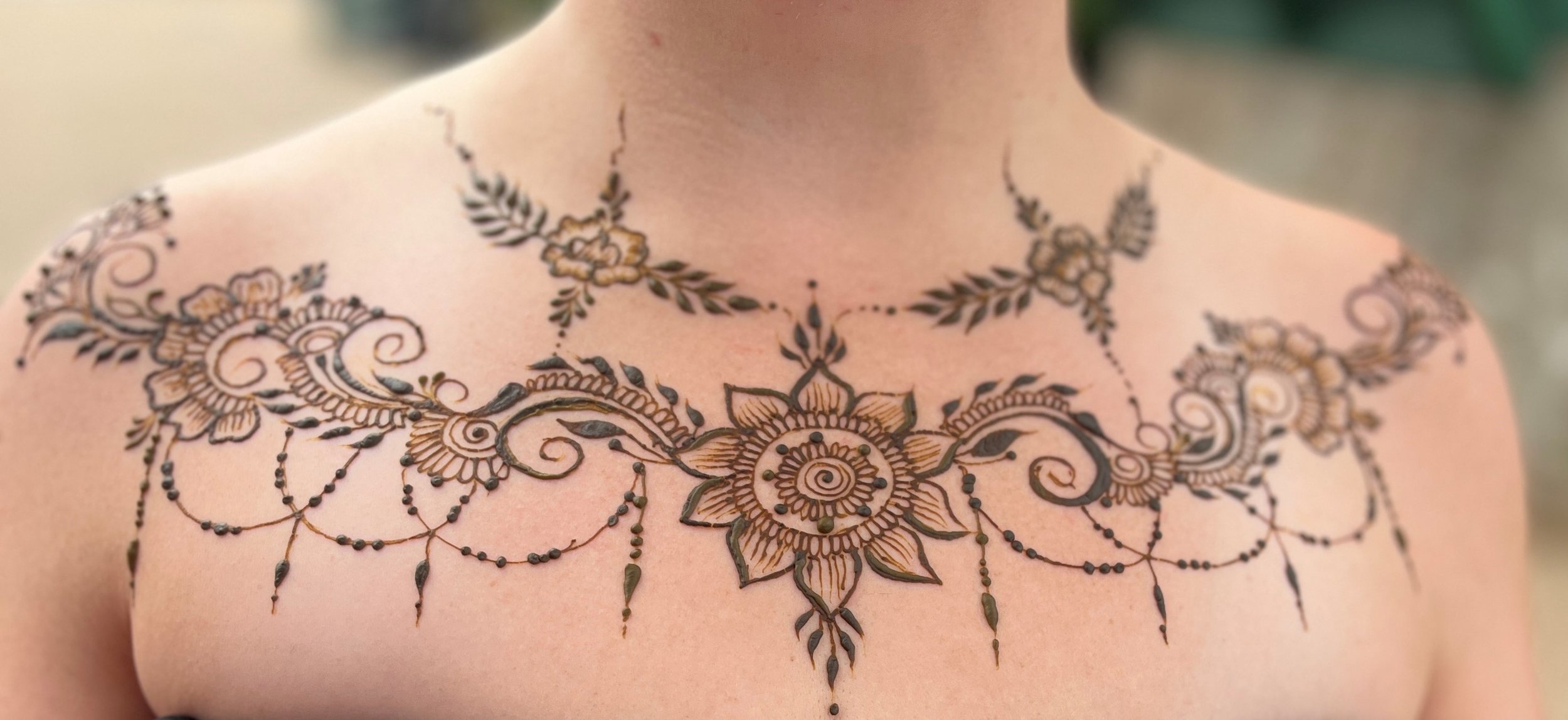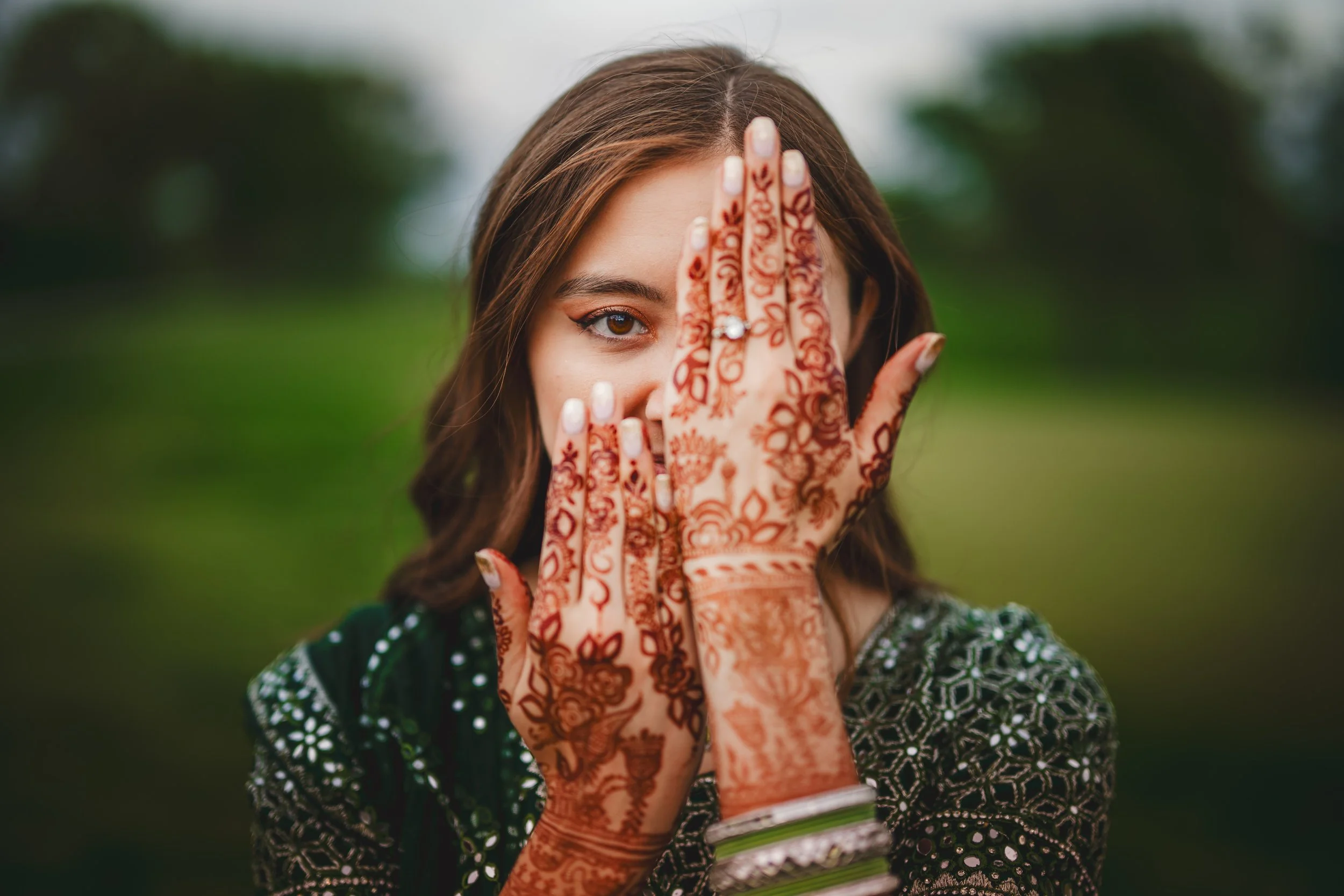
HENNA (also known as mehndi)
Mehndi, also known as henna, is a form of body art that originated in ancient India and has since spread across the world. This traditional practice involves applying a paste made from the crushed leaves of the henna plant onto the skin in decorative patterns. While most often seen on the hands and feet, designs can be placed on other parts of the body as well.
The application process is simple but meaningful. The paste is left on the skin for several hours, after which it is removed to reveal a bright orange stain. Over time, this stain deepens into a rich reddish-brown color that typically lasts anywhere from five to ten days, depending on aftercare and skin type.
Mehndi is widely used to celebrate important occasions such as weddings, festivals, and religious ceremonies. Beyond its aesthetic beauty, henna has long been valued for its natural cooling and soothing properties, giving it a medicinal dimension in addition to its cultural significance. Designs range from simple motifs to intricate patterns that often carry symbolic meaning.
Henna itself is made from dried leaves of the henna plant, which contain a natural dye called lawsone. This dye is responsible for the characteristic stain. The quality of the stain depends on several factors: the freshness of the henna powder, how long the paste is kept on the skin, and even the individual’s skin chemistry.
For best results, henna paste should be free of synthetic dyes or chemicals. Natural enhancers such as sugar, molasses, or essential oils are often added to improve the paste’s consistency and staining power. Some artists also incorporate jagua juice for achieving a deeper, darker color.
A henna temporary tattoo typically goes through several stages after it is applied:
Drying: Once the henna paste is applied, it needs to dry for 20-30 minutes and must remain on the skin for several hours to allow the dye to fully stain the skin. The drying time can vary depending on the thickness of the paste, the temperature, and the humidity level.
Scraping off: After the henna paste has dried, it will begin to crack and peel off the skin. It's important to leave the paste on for as long as possible to allow the dye to fully develop.
Initial Stain: Once the paste is removed, the skin will be stained with an orange color. The intensity of the stain can vary depending on the quality of the henna paste, the length of time it was left on the skin, and the individual's skin chemistry.
Darkening: Over the next 24-48 hours, the henna tattoo will continue to darken as the dye oxidizes and reacts with the skin. The design will become more defined and the color will deepen. This varies on different parts of the body.
Longevity: The henna tattoo will continue to darken and maintain its color for several days to a couple of weeks, depending on the quality of the henna paste and how well the design was cared for. It will gradually fade as the skin naturally exfoliates.
